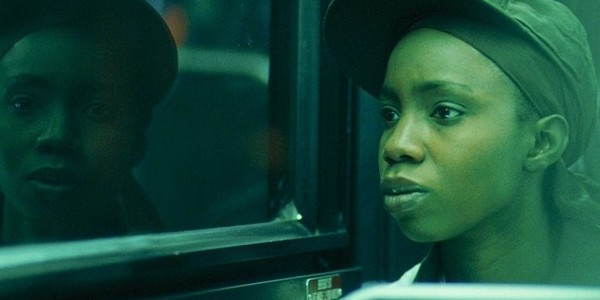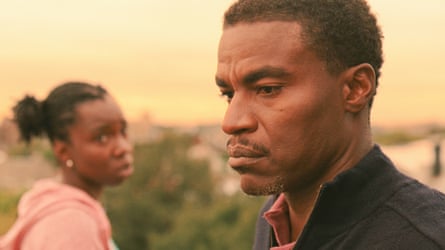Self-Discovery and Acceptance in "Pariah"
Pariah is a 2011 indie film directed by Dees Rees. The film follows Alike, a Black lesbian, who is struggling to navigate her sexuality and her religious family. Over the course of the film, Alike explores her sexuality and expression while keeping her identity a secret from her parents. However, eventually, her parents find out, and she is kicked out of her house after her mother physically attacks her. Later, her father comes to see her and attempts to convince her to come home, but Alike chooses to stay away, instead leaving to begin college early.
In her family life, Alike is pressured by her mother to conform to heteronormativity and religious culture. In contrast, outside her family life, Alike tries to conform to the butch and club culture her friend Laura is part of. However, both scenes are not the right fit for her, and through a friendship/brief relationship with Bina, Alike is able to finally find her own sense of self. Someone mentioned in class that each character, Alike, Bina, and Laura, is represented by different styles of music; Alike with instrumental music, Bina with punk, and Laura with hip hop (if I remember correctly). Not only is this a cool fun fact, but it also shows the thought and care that was put into this film.
Clothing choices are another example of the thought put into the film. Throughout the film, we can see Alike’s clothing choices reflect her attempts to fit into certain binaries. When she is with her family, or more specifically her mom, she wears more conservative, feminine clothing. When she is with Laura, she wears masculine or “butch” clothing. However, in both of these scenes (religious and butch/club), she is an outsider. She seems just as uncomfortable in the club as she is with her mother, and this uncomfortableness is reflected in her clothing. It isn’t until after she meets Bina that she begins to find her own sense of fashion and her own scene. She gets more serious about her writing, eventually graduating early and leaving for a college writing seminar.
As mentioned in "Pariah and Black Independent Cinema Today: A Roundtable Discussion,” Pariah “...is a cinematic contribution that has made black lesbian coming of age not only visible but universal in appeal.” (Keeling et al. 425) There is a universal appeal to the film; even those outside the Black lesbian community can relate to Alike’s experiences as a teenager. I’m sure many people during their teenage years had or wanted to have a screaming, tearing-down-the-room rage fest. The discussions between Alike and her family also felt very real, something that also contributed to the film's universal appeal. As the film’s OutTake presentation mentioned, the director had those playing Alike and her family attend family therapy sessions, and it seems like that helped the actors play their roles as family members realistically.
I thought this was a beautiful film, both in message and cinematography. The rooftop scene is especially memorable and, as it was pointed out in class, the scene’s lighting and scenery make it recognizably different than other scenes in the film. To me, it makes sense that this scene would be different visually because it is when Alike is choosing to make a change. She is choosing to graduate early, work on her writing, and continue to discover and become more comfortable with who she is. Her written piece about choice is, again, beautiful and memorable. In a time of turmoil and unknown futures, Pariah’s message of hope is imperative. Even though Alike’s family didn’t fully support her, she was still able to eventually choose to leave and become more open about herself and her sexuality. Because of the results of the presidential election, so many young kids, especially young trans kids, think that all hope is lost. But this film just proves that, even if you can’t now, one day you will be able to choose, and you’ll be free.
Citations:
Keeling, Kara, et al. "Pariah and Black Independent Cinema Today: A Roundtable Discussion." GLQ: A Journal of Lesbian and Gay Studies, vol. 21 no. 2, 2015, p. 423-439. Project MUSE, https://muse.jhu.edu/article/581608.


I think the decision of the director to have the family actors attend family counseling was really interesting. I see all kinds of stuff about method acting and love interest costars actually dating, but I've never heard of it for family dramas. It's really an interesting choice, and the relationships between the characters seemed authentic. Arthur seemed disinterested but obligated to do his "job" as a father, and Audrey seemed desperate to hold her family together within the confines of conservative religion. I think this film really struck a nerve with a lot of people in the class, as we could relate to Alike's struggle against not just her parents and family, but with belonging in religion in general.
ReplyDeleteWe talk a lot in my intro to screenwriting class about the false victory and the true victory, and the rooftop scene really marks the true victory and turning point in this film for me. It's the first time we see Alike truly at peace with herself, and it also marks a turning point in the story for her, where we see her choosing (emphasis on choosing) to leave and start a new chapter of her life. I really loved this film and I love your analysis too!
ReplyDeleteHello! I am glad you brought up how Alike, Bina, and Laura are represented by different genres of music and agree it showed the amount of consideration taken in for the characters. I am also glad you discuss clothing and presentation because as you pointed out that was something Alike was struggling with. I feel we have all been in a position of trying to find how we would like to present ourselves and seeing the additional struggles of the heteronormative and religious cultures placed upon Alike, it’s understandable why at the end of the film she chooses to stay away. Great blog post!
ReplyDelete